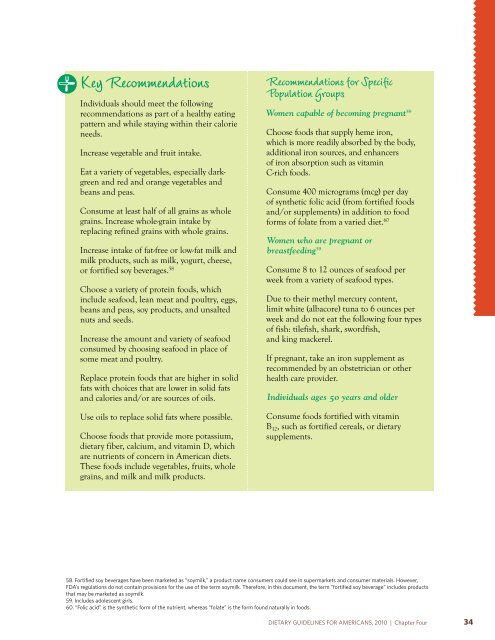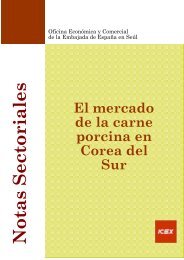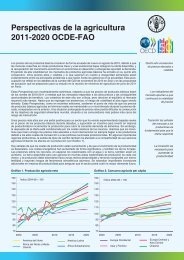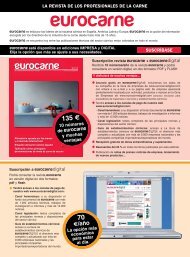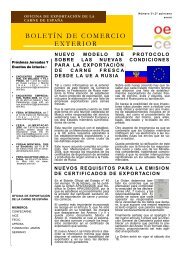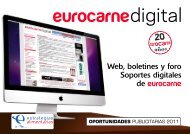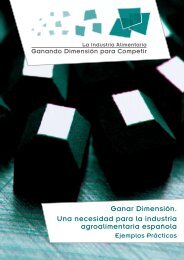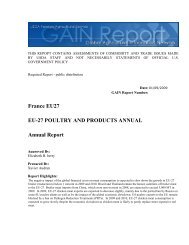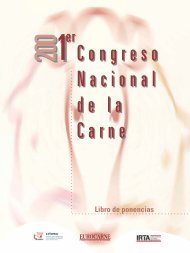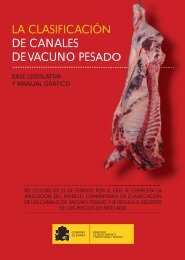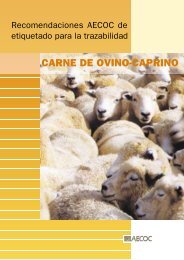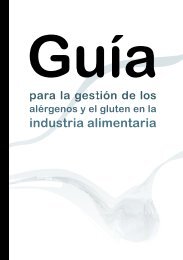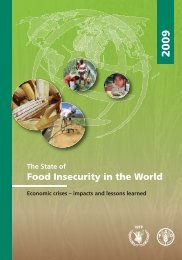Dietary Guidelines for Americans - SchoolNutritionAndFitness.com
Dietary Guidelines for Americans - SchoolNutritionAndFitness.com
Dietary Guidelines for Americans - SchoolNutritionAndFitness.com
- No tags were found...
You also want an ePaper? Increase the reach of your titles
YUMPU automatically turns print PDFs into web optimized ePapers that Google loves.
Key Re<strong>com</strong>mendationsIndividuals should meet the followingre<strong>com</strong>mendations as part of a healthy eatingpattern and while staying within their calorieneeds.Increase vegetable and fruit intake.Eat a variety of vegetables, especially darkgreenand red and orange vegetables andbeans and peas.Consume at least half of all grains as wholegrains. Increase whole-grain intake byreplacing refined grains with whole grains.Increase intake of fat-free or low-fat milk andmilk products, such as milk, yogurt, cheese,or <strong>for</strong>tified soy beverages. 58Choose a variety of protein foods, whichinclude seafood, lean meat and poultry, eggs,beans and peas, soy products, and unsaltednuts and seeds.Increase the amount and variety of seafoodconsumed by choosing seafood in place ofsome meat and poultry.Replace protein foods that are higher in solidfats with choices that are lower in solid fatsand calories and/or are sources of oils.Use oils to replace solid fats where possible.Choose foods that provide more potassium,dietary fiber, calcium, and vitamin D, whichare nutrients of concern in American diets.These foods include vegetables, fruits, wholegrains, and milk and milk products.Re<strong>com</strong>mendations <strong>for</strong> SpecificPopulation GroupsWomen capable of be<strong>com</strong>ing pregnant 59Choose foods that supply heme iron,which is more readily absorbed by the body,additional iron sources, and enhancersof iron absorption such as vitaminC-rich foods.Consume 400 micrograms (mcg) per dayof synthetic folic acid (from <strong>for</strong>tified foodsand/or supplements) in addition to food<strong>for</strong>ms of folate from a varied diet. 60Women who are pregnant orbreastfeeding 59Consume 8 to 12 ounces of seafood per week from a variety of seafood types. Due to their methyl mercury content, limit white (albacore) tuna to 6 ounces per week and do not eat the following four types of fish: tilefish, shark, swordfish, and king mackerel. If pregnant, take an iron supplement as re<strong>com</strong>mended by an obstetrician or other health care provider.Individuals ages 50 years and olderConsume foods <strong>for</strong>tified with vitaminB 12 , such as <strong>for</strong>tified cereals, or dietarysupplements.58. Fortified soy beverages have been marketed as “soymilk,” a product name consumers could see in supermarkets and consumer materials. However,FDA’s regulations do not contain provisions <strong>for</strong> the use of the term soymilk. There<strong>for</strong>e, in this document, the term “<strong>for</strong>tified soy beverage” includes productsthat may be marketed as soymilk.59. Includes adolescent girls.60. “Folic acid” is the synthetic <strong>for</strong>m of the nutrient, whereas “folate” is the <strong>for</strong>m found naturally in foods.DIETARY GUIDELINES FOR AMERICANS, 2010 | Chapter Four 34


